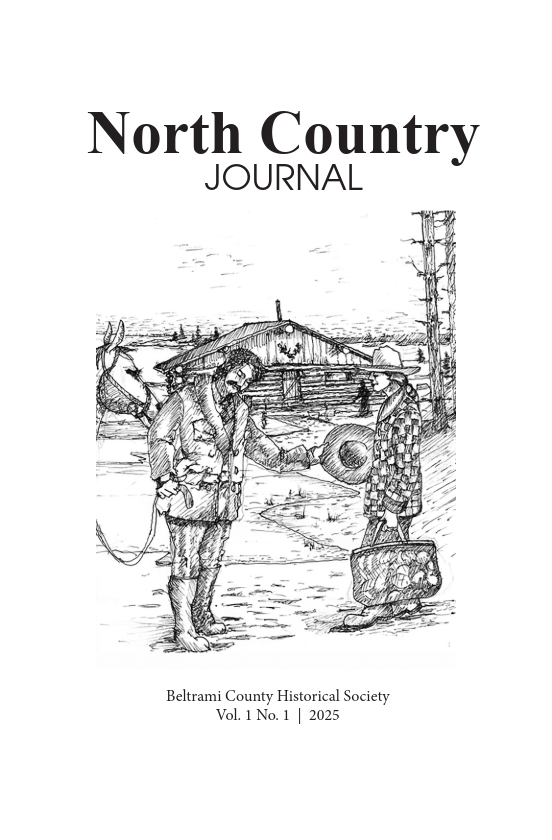What a Doll
- Emily Thabes
- Jun 4, 2022
- 3 min read
Emily Thabes, Executive Director
Happy Saturday, #FriendsofHistory! We are just one week into our new exhibit season, and I've been working off and on today adding to our Century of Play exhibit. This special exhibit is part of a collaborative exhibit of Minnesota's Historic Northwest: visit each participating museum in the region to view their toy and game collections, as well.
Beltrami County Historical Society has a broad collection of toys, some from as early as the 1890s, including these three examples from the 1930s:

Selection of dolls from the Beltrami County Historical Society Collection
Buster Brown Rag Doll
Buster Brown was originally a comic strip character created in 1902 by Richard Felton Outcault, who was associated with the Brown Shoe Company. Buster, with his pageboy haircut, was based on a small child in Outcault’s hometown. Another small child named Richard Barker played Buster Brown in the Brown Shoe Company advertising campaign. Little people were hired to play Buster on tours around the United States. These little people, accompanied by a Pit Bull dog named Tige, performed in department stores, theaters, and shoe stores from 1904 until 1930. The Buster Brown character went on to a career in comic strips, the theater, radio, television, and comic books.

Buster Brown Advertisement, 1950s
Dolls have been used for the purpose of product advertising since the late 1800s, with popularity peaking for dolls of this type in the 1920s and 30s. Although this doll is not dated, we believe it was made in the mid to late 30s. The body is painted on heavy-duty fabric or canvas, stuffed, and sewed as a single body with no articulated parts.
Splash Me Doll
Genevieve Pfeffer is the creator of the Splash Me Doll, patented in 1917. Splash Me is a bisque novelty doll designed with similar features to the Kewpie doll with the added allure of the naughty bathing beauty.

From the website Bawdy Bisques and Naughty Novelties:
By 1918, the dolls were being offered with both silk kerchiefs or with mohair wigs. A 1921 advertisement from the wholesale catalogue Butler Brothers advertised the "Splash Me" dolls as "Gene George's clever conceit" and as being made from flesh tinted bisque finished composition. The dolls were offered either with a kerchief caps over painted hair or with a mohair wig in a "fashionable veil covered coiffure."
Radley's article states that the dolls were an instant hit when Pfeffer first introduced them in Santa Cruz, California, in 1918, Pfeffer received over $250,000 in orders. Florenz Ziegfeld made the Splash Me doll a theme in his Midnight Follies and Atlantic City held Splashme bathing beauty contests. The article quotes movie star Mary Pickford as stating, "Splashmes (sic) are a delight to have around and one cannot help but smile when looking at them." According to a 1920 patent infringement case brought by Borgfeldt, some 360,000 Splashmes were sold between April 1918, when they were first marketed, and June 1919, with the number of sales said to be between $500,000 to $1,000,000. The Splash Me appeared not only in doll form, but also as party favors, postcards, and children's books.
Our own red-haired Splash Me has an interesting "extra": a small label on its base stating that the Coiffure is by Hyman and Oppenheim, New York.

Splash Me Doll patent label
The Hyman & Oppenheim Company of New York City was established in 1878. They were providing services to beauty salons, barbers, and specialty shops well into the Model A era. They also manufactured wigs of all kinds, holding several patents (Men and Wigs by Jackie Brooks).

Coiffures of Style and Quality, published by Hyman and Oppenheim, N.Y., 1918
Composition Baby Doll
We hope to offer a full program later this year all about the history of dolls and doll collecting that may provide you with much greater detail about the myriad of baby dolls and their varying materials and body types. This particular doll is made of composition, which is a combination of sawdust, glue, and other materials such as cornstarch, resin, and wood flour. Because of this mix of materials, composition-bodied dolls tend to crack and break over time and as a result of exposure to heat and/or humidity.
Composition Dolls were made from the mid-1800s through the 1950s and were made in different sizes with a variety of features. This doll has sleep eyes (the doll appears asleep when laid flat, see below) and an open, painted mouth with no visible teeth. The hair is molded, which helps us date this doll to the 1930s or earlier. The bonnet appears to be original to the doll. The doll is marked but we are unable to connect that mark to its maker.

Composition Doll with Sleep Eyes
These are just a few of the large variety of dolls and other toys and games that are displayed now at the History Center in the West Gallery! We hope that you come in to take a closer look at all of the toys on display and learn more about them or join us later this year for programs featuring your favorite (or soon to be favorite!) toys and games.






What a fascinating glimpse into history! It's incredible how much thought and craftsmanship went into every detail—even down to the labels on vintage items. As a professional in the field, I truly appreciate how skilled label designers of the past were in capturing the essence of a product or artifact. Their work adds so much depth and character to historical pieces like this.
What a fascinating glimpse into the history of dolls! The stories behind each piece truly bring them to life. For anyone looking to enhance their writing about such topics, the best write my essay website in Canada can provide valuable assistance.